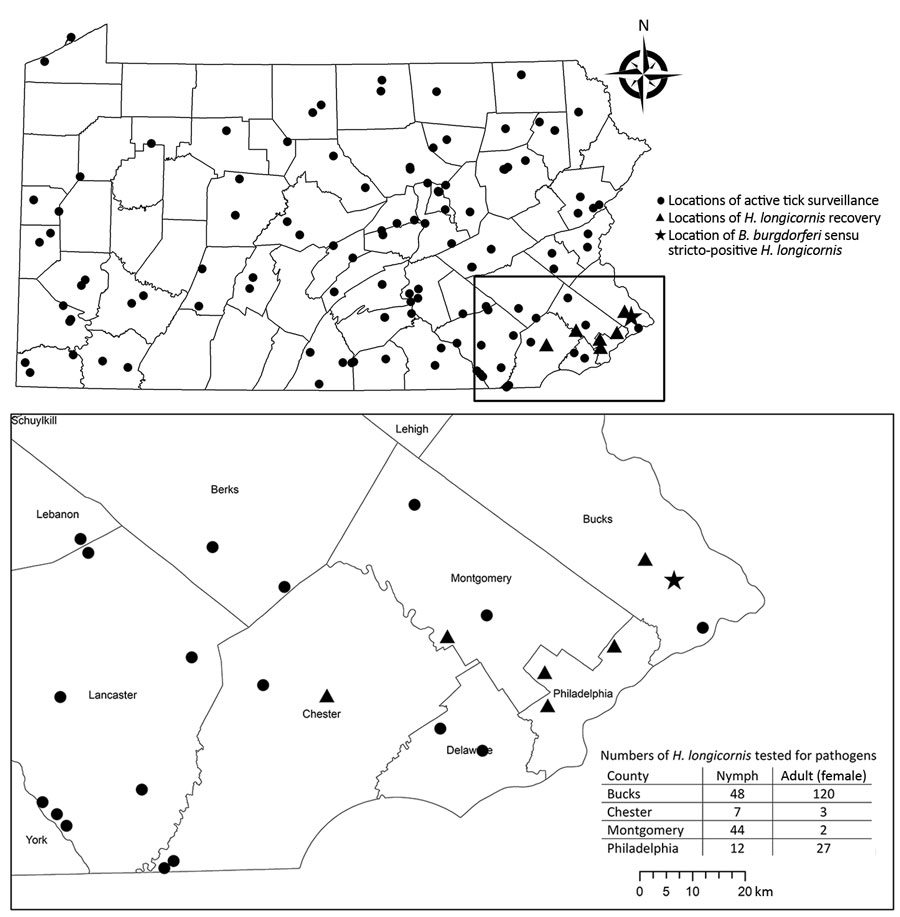Volume 27, Number 2—February 2021
Dispatch
Borrelia burgdorferi Sensu Stricto DNA in Field-Collected Haemaphysalis longicornis Ticks, Pennsylvania, United States
Figure

Figure. County map of Pennsylvania, USA, and the southeastern region (inset) showing locations of active tick surveillance, where Haemaphysalis longicornis ticks were recovered, and where Borrelia burgdorferi sensu stricto–positive H. longicornis ticks were found, May 1–September 6, 2019. Pennsylvania county map shows 38 counties sampled weekly and an additional 14 counties sampled opportunistically that yielded low tick recovery (Ixodes scapularis ticks only).
Page created: December 04, 2020
Page updated: January 24, 2021
Page reviewed: January 24, 2021
The conclusions, findings, and opinions expressed by authors contributing to this journal do not necessarily reflect the official position of the U.S. Department of Health and Human Services, the Public Health Service, the Centers for Disease Control and Prevention, or the authors' affiliated institutions. Use of trade names is for identification only and does not imply endorsement by any of the groups named above.